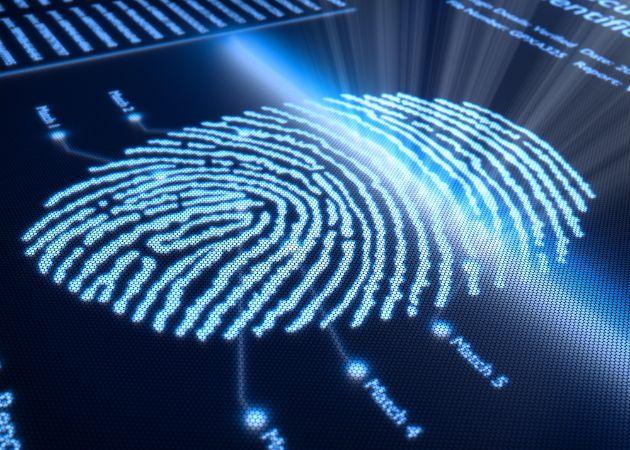
There are two commonly used methods for fingerprinting: Ink fingerprinting and digital fingerprinting. Ink fingerprinting is falling out of favour, and digital fingerprinting is on the rise. In this article, we’ll examine the differences between the two and look at why the Canadian government prefers digital fingerprints.
Ink & Roll Fingerprinting
Ink & roll is the traditional method of fingerprinting—by some counts, it’s existed since the 19th century. The main advantage of the technique is the relatively low cost of ink and paper compared to the price of a digital fingerprinting apparatus (live scan technology).
How the ink & roll technique is performed
You might think that ink & roll is as simple as dipping your fingerprint in ink, then pressing it against a piece of paper.
If only things were that simple.
A trained specialist must assist in the ink & roll technique. They take the hand of the person who is to be fingerprinted, then, starting with the thumb, they place each finger on an ink pad. They slowly roll the finger in the ink so the print is covered. They’ll then move the hand over to a document made for recording the fingerprints. Once again, they’ll roll the finger (now wet with ink) over specific areas of the document to record the fingerprint.
The person being fingerprinted does not move their hand during this process—it’s only moved by the specialist taking the fingerprints.
Digital Fingerprinting
Digital fingerprinting is the new industry standard—and it’s the only kind of fingerprinting used by the RCMP (except in rare exceptions where a client cannot have their fingerprints taken digitally).
The live scan fingerprinting process—also known as digital fingerprinting—is pretty straightforward. Instead of having to roll your fingers in ink, then roll them on a piece of paper, you’ll simply need to place them on a glass plate. A technician is still needed to perform the fingerprint scan, but the entire process is much less involved than ink & roll. Appointments at our offices typically take 10 minutes or less.
Digital fingerprinting is the standard for the RCMP—and many other institutions. Our digital fingerprinting services are used for:
- Criminal record checks
- Immigration
- Citizenship
- Public and private employment
- US Entry Waivers
- Volunteering
- Adoption
- And much more
Benefits of Digital Fingerprinting
There are several benefits to digital fingerprinting. When compared to ink & roll fingerprinting, it’s:
- Faster
- Easier
- More accurate
- Less wasteful
- Less messy
Let’s expand a bit on each of those points:
Digital fingerprinting is faster because each impression doesn’t need to be taken individually—all 5 prints can be taken simultaneously. There’s also no need to digitize prints that have been taken on paper—they’re already digital. Fingerprint databases are almost universally searched digitally in the modern age, so digital prints are essential.
Compared to ink & roll, digital fingerprinting is easier, too. Impressions are taken quickly, and while a technician is still needed to ensure the fingerprints are taken properly, they’ll be able to see immediately whether or not the impression is accurate. This makes it simple to retake fingerprints when needed.
None of the problems with ink fingerprinting, be they smudging, messy ink on your hands, or wasted paper and ink, are present with digital fingerprinting. With all of these advantages, it’s easy to see why it’s become the industry standard.
Digital Fingerprinting Is Here To Stay
We couldn’t be happier about the advances in fingerprinting. They’re less wasteful, less time-consuming, and more accurate. At FASTCHECK, we offer a wide range of digital fingerprinting services. We’ll help you by taking your fingerprints for employment, immigration, criminal record checks, and more.
Looking for digital fingerprinting services? Call FASTCHECK today!

Recent Comments